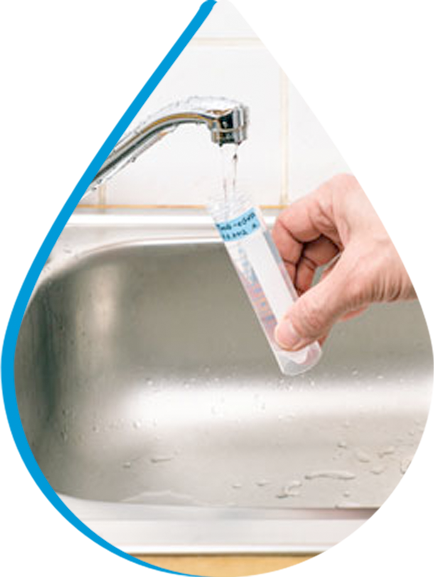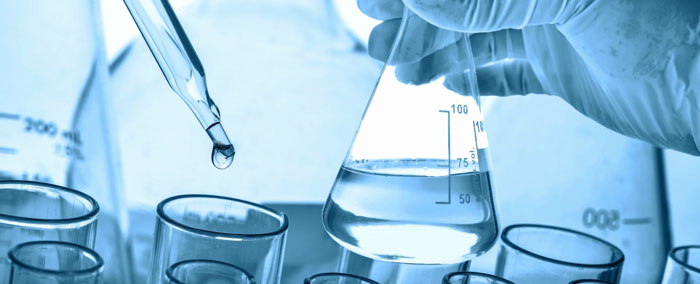Understand the Value of Water Screening in Maintaining Compliance With Health And Wellness Standards
In the world of public health, understanding the importance of water screening is vital for preserving compliance with stringent wellness criteria established forth by authoritative bodies like the That and EPA. What are the accurate methods made use of in water testing, and just how do they make sure that our most important resource continues to be uncontaminated?
Key Wellness Criteria for Water
Ensuring the safety and security and quality of alcohol consumption water is critical, as it directly impacts public health and wellness. Rigorous health and wellness criteria are established to secure individuals from waterborne conditions and contaminants that can result in damaging health effects. The World Health And Wellness Company (THAT) and national agencies like the Epa (EPA) in the USA set guidelines and regulatory restrictions for numerous physical, chemical, and biological specifications in alcohol consumption water.
These standards are based on comprehensive clinical study and are occasionally reviewed to incorporate new findings and technological advancements. Key parameters include microbial contaminants such as viruses and bacteria, chemical pollutants like lead and arsenic, and physical qualities such as turbidity and pH levels. Compliance with these standards ensures that water is without unsafe materials and is cosmetically pleasing to the customer.
Water screening plays a crucial role in validating conformity with these wellness requirements. Routine tracking and testing help identify possible concerns prior to they present a substantial health and wellness threat, enabling for prompt intervention and remediation. By abiding by these criteria, water carriers can keep public self-confidence in the security of the community's water supply, therefore guarding public health and wellness successfully.
Usual Contaminants Found
When analyzing water top quality, what are the most widespread pollutants that have a tendency to be detected? Microbial virus, including microorganisms like Escherichia coli and protozoans such as Giardia and Cryptosporidium, are regularly found in water resources, presenting substantial health and wellness threats if consumed.
Chemical contaminants are likewise a key issue. Nitrates, usually resulting from farming plant foods, can result in significant health and wellness issues, especially in babies. Heavy steels such as mercury, lead, and arsenic, normally presented through industrial discharge or all-natural mineral down payments, can have lasting harmful impacts. Unstable organic substances (VOCs) and chemicals, results of commercial tasks and farming practices, further add to water contamination.
Not natural substances such as fluoride and chlorine, although often deliberately included in water for health advantages, can end up being troublesome at elevated degrees. Arising pollutants, including drugs and individual care items, are significantly being discovered, raising problems regarding their potential influence on human health and wellness and communities. Addressing these contaminants is essential for guarding public wellness and making certain water top quality compliance.
Methods of Water Testing
Water testing's precision is crucial for guaranteeing and determining contaminants safety compliance. Water Testing Service. To attain exact outcomes, various techniques are employed, each customized to discover details pollutants and align with regulatory requirements. One prevalent method is spectrophotometry, which gauges the absorption of light by chemical compounds in the water, thereby recognizing elements like phosphates and nitrates. This technique is useful for its sensitivity and uniqueness.
Chromatography is another advanced approach used, especially for natural impurities. By dividing mixes into private elements, it enables in-depth evaluation of intricate contaminants. Gas chromatography and liquid chromatography are typically used variations, each fit for various substance kinds.
Microbiological screening is vital for identifying virus such as microorganisms, infections, and protozoa. Strategies such as membrane layer purification and multiple-tube fermentation are employed to culture and identify microbial presence. These methods are vital in securing public health and wellness by making certain microbial safety and security.

Advantages of Routine Testing
Recognizing the numerous techniques of water testing highlights the necessity of normal screening methods to keep water top quality. Routine water testing works as an aggressive procedure to identify possible pollutants before they escalate right into major health risks. By continually keeping an eye on water quality, companies can identify contaminants such as microorganisms, heavy metals, and chemical deposits early, permitting prompt treatments that avoid health hazards and expensive remediation initiatives.

Furthermore, normal screening guarantees that water systems abide with established health requirements and guidelines. This conformity is crucial for preventing lawful charges and keeping the trust of stakeholders and consumers. Constant water top quality analyses help identify patterns or changes in water make-up, providing valuable data that can lead functional decisions and resource management methods.
In markets such as metropolitan water supply, medical care, and food processing, preserving high water quality criteria is indispensable to shielding public wellness. Overall, the advantages Water Testing Services Near Me of normal water screening extend past conformity, improving operational performance, public security, and environmental stewardship.
Steps to Ensure Conformity
To guarantee conformity with water high quality regulations, companies should apply a structured strategy encompassing both rehabilitative and preventive procedures. A thorough risk analysis ought to be performed to recognize prospective contamination resources and susceptabilities within the water system. This evaluation notifies the development of a tailored water administration plan that lays out certain evaluating procedures, regularity, and parameters required to satisfy governing standards.
Subsequent to the preparation stage, organizations ought to establish a routine for normal water screening that sticks to both nationwide and regional standards. Using certified labs makes certain the accuracy and dependability of test results. Any discrepancies from acceptable water quality criteria have to motivate immediate restorative activities, such as system cleansing, repair work, or adjustments in therapy procedures.
Moreover, preserving comprehensive documents of all screening activities, results, and rehabilitative activities is vital for demonstrating conformity throughout audits and evaluations. Regular training and updates for team included in water management procedures are vital to guarantee they understand current laws and ideal methods.
Verdict
Routine water screening is necessary for preserving conformity with health and wellness standards established by companies such as that and EPA. By identifying impurities like microbial microorganisms, hefty metals, and chemicals, screening guarantees that alcohol consumption water remains safe. Aggressive monitoring shields public health and wellness, sustains regulatory compliance, and fosters self-confidence in water quality monitoring. In addition, consistent screening advertises environmental sustainability and safeguards areas, preserving crucial water resources for future generations. Compliance with these criteria is important for the health of society.
In the realm of public health and wellness, understanding the significance of water screening is indispensable for maintaining compliance with strict health and wellness criteria established forth by reliable bodies like the WHO and EPA. By adhering to these requirements, water providers can maintain public confidence in the security of the neighborhood's water supply, consequently safeguarding public health efficiently.

In industries such as community water healthcare, supply, and food handling, keeping high water top quality requirements is indispensable to securing public health and wellness.